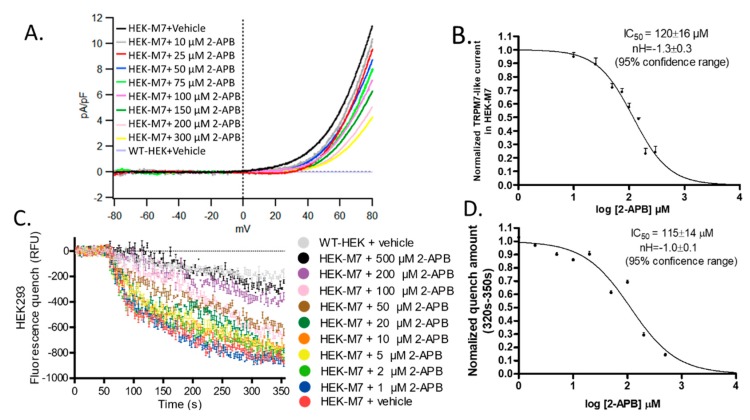Figure 2.
Effect of 2-APB on TRPM7 channels. (A) Representative TRPM7-like current from a whole-cell patch-clamp experiment with a HEK-M7 cell. The voltage was clamped at −80 mV, then ramped from −80 to +80 mV. The outwardly rectifying current at positive potentials was suppressed by a perfusion solution containing 2-APB and completely reversed by perfusion with a 2-APB-free solution. There was a very low rectifying current (2.2 fA/pF at + 80 mV) in the WT-HEK cells (Figure S1). (B) Normalized current at +80 mV (n ≥ 5). The IC50 and Hill slope of the current blockade by 2-APB were 120 ± 16 µM and −1.3 ± 0.3, respectively (95% confidence range). (C) Results from experiments using Mn2+ quenching of Fura-2AM fluorescence. Mn2+ and 2-APB were added after 50 s baseline measurement. 2-APB suppressed fluorescence quenching by blocking entry of Mn2+ via TRPM7 channels. Fluorescence quenching in WT-HEK cells may reflect the flux of Mn2+ through pathways other than TRPM7 channels. (D) Normalized quench levels averaged over 320–350 s (n = 3). The IC50 and Hill slope of quench blockade was 115 ± 14 µM and −1.0 ± 0.1, respectively (95% confidence range).

